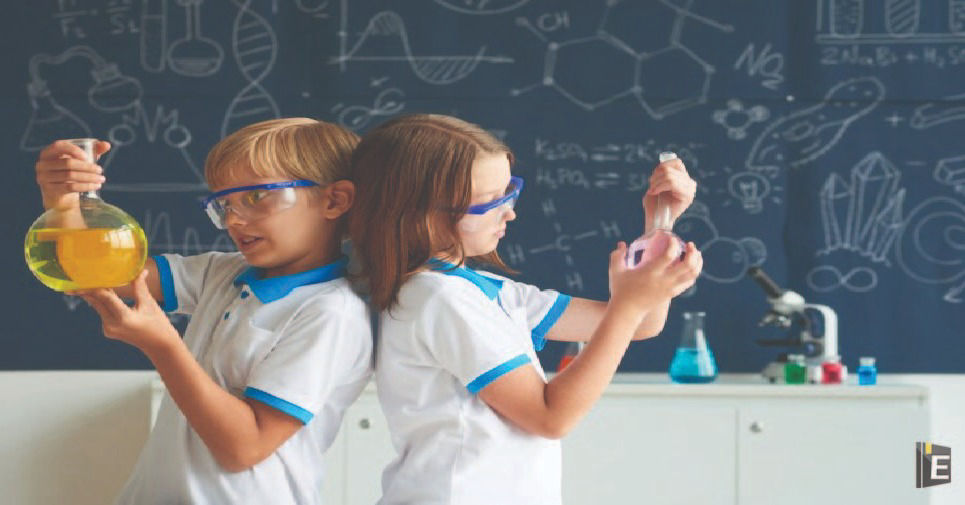General Science Question and Answer

Welcome to our General Science Question and Answer blog, where curiosity meets knowledge! Here, we explore the fascinating world of science, unravelling its mysteries one question at a time. Whether you're curious about the wonders of the universe, the complexities of the human body, or the marvels of technology, our blog is your go-to source for insightful answers. Our team of passionate scientists and experts is dedicated to providing accurate and easy-to-understand explanations for various science topics. Join us on this enlightening journey, where you can ask questions, share your thoughts, and expand your understanding of the world around us.
General Science Question
In this article General Science Question and Answer, we are providing the latest and most important General Science Questions related to Chemistry GK, Physics GK and Biology GK for those learners who are preparing for upcoming competitive exams.
Also, Read Latest Current Affairs Questions 2023: Current Affairs Today
"Put your knowledge to the test and excel with our General Knowledge Mock Test and Current Affairs Mock Test!"
General Science Question and Answer
Q : Which of the following is an epidemic and endemic disease?
(A) polio
(B) measles
(C) Typhoid
(D) Cholera
Correct Answer : D
Explanation :
Cholera, caused by the bacterium Vibrio cholerae, can be both epidemic and endemic. Epidemic cholera refers to sudden outbreaks affecting large populations, often due to contaminated water. Endemic cholera signifies the continuous, stable presence of the disease in specific regions, indicating a persistent, albeit lower, level of infection over time.
The refractive index of diamond is-
(A) 1.77
(B) 1.47
(C) 1.44
(D) 2.42
Correct Answer : D
Explanation :
The refractive index of diamond is approximately 2.42. Diamond has a very high refractive index, which means it bends light at a significant angle when it enters the diamond, contributing to its sparkling brilliance.
Which plant has seed but no fruit?
(A) Almond
(B) Sykes
(C) Groundnut
(D) Reed
Correct Answer : B
Explanation :
Certain plants, like gymnosperms, produce seeds but lack fruits. Gymnosperms, including pine trees and cycads, have exposed seeds on cone scales, distinguishing them from angiosperms, which produce seeds enclosed within fruits. The absence of a fruit covering the seed is a characteristic feature of gymnosperms, a group of seed-producing plants.
To accomplish which action is dialysis used?
(A) Lungs
(B) liver
(C) Heart
(D) kidney
Correct Answer : D
Explanation :
Dialysis is used to accomplish the action of kidney function. It is a medical procedure used to remove waste products, excess salts, and fluids from the blood when the kidneys are no longer able to perform these functions adequately. Dialysis helps maintain proper electrolyte balance and removes toxins from the body, which are essential roles of healthy kidneys.
What are the plants that never produce flowers called?
(A) angiosperms
(B) gymnosperms
(C) cryptogams
(D) None of these.
Correct Answer : C
Explanation :
The plants that never produce flowers are called "cryptogams." Cryptogams include plants such as ferns, mosses, liverworts, and algae. Unlike flowering plants (angiosperms), which reproduce through seeds enclosed within flowers, cryptogams reproduce through spores and do not produce true flowers. Cryptogams are considered more primitive in evolutionary terms compared to angiosperms, which are the most dominant group of plants on Earth today.
What is the upper surface of the skin called?
(A) protodermis
(B) dermis
(C) epidermis
(D) None of these
Correct Answer : C
Explanation :
the uppermost layer of the skin is called the epidermis. It is the outermost layer of the skin and provides a protective barrier against environmental factors, pathogens, and moisture loss. The epidermis also contains cells responsible for producing melanin, the pigment that gives skin its color, and it constantly renews itself through a process called cell turnover.
Which element is present in both cement and bones?
(A) calcium
(B) phosphorus
(C) nitrogen
(D) silicone
Correct Answer : A
Explanation :
Calcium is the element that is present in both cement and bones. In cement, calcium is a key component of calcium silicate compounds, which contribute to the strength and durability of the material. In bones, calcium is a vital mineral that provides structural support and strength. It plays a crucial role in various physiological processes in the human body, including muscle function and nerve signaling.
Which is the most powerful muscle in the human body?
(A) finger
(B) feet
(C) jaw
(D) wrist
Correct Answer : C
Explanation :
The masseter muscle, which is one of the muscles used for chewing and is located in the jaw, is often considered one of the most powerful muscles in the human body in terms of its force and capability. However, the term "most powerful" can be interpreted in different ways, considering factors like strength, endurance, or speed. Different muscles might be considered the most powerful depending on the specific criteria used.
Sun sign vitamin is-
(A) Vitamin A
(B) Vitamin C
(C) Vitamin K
(D) Vitamin D
Correct Answer : D
Explanation :
Vitamin D is often referred to as the "sunshine vitamin" because our bodies can produce it in response to sunlight exposure. When our skin is exposed to sunlight, it synthesizes vitamin D, which is important for bone health and various other bodily functions.
Which tissue helps in wound healing?
(A) nervous tissue
(B) epithelial tissue
(C) muscle tissue
(D) connective tissue
Correct Answer : B
Explanation :
Epithelial tissue plays a crucial role in wound healing. When the skin is wounded, epithelial cells at the edges of the wound multiply and migrate to cover the wound, forming a protective layer. This process is essential for the initial sealing of the wound and is one of the early stages in the overall wound healing process. Epithelial tissue helps in closing the wound and restoring the skin's integrity.



